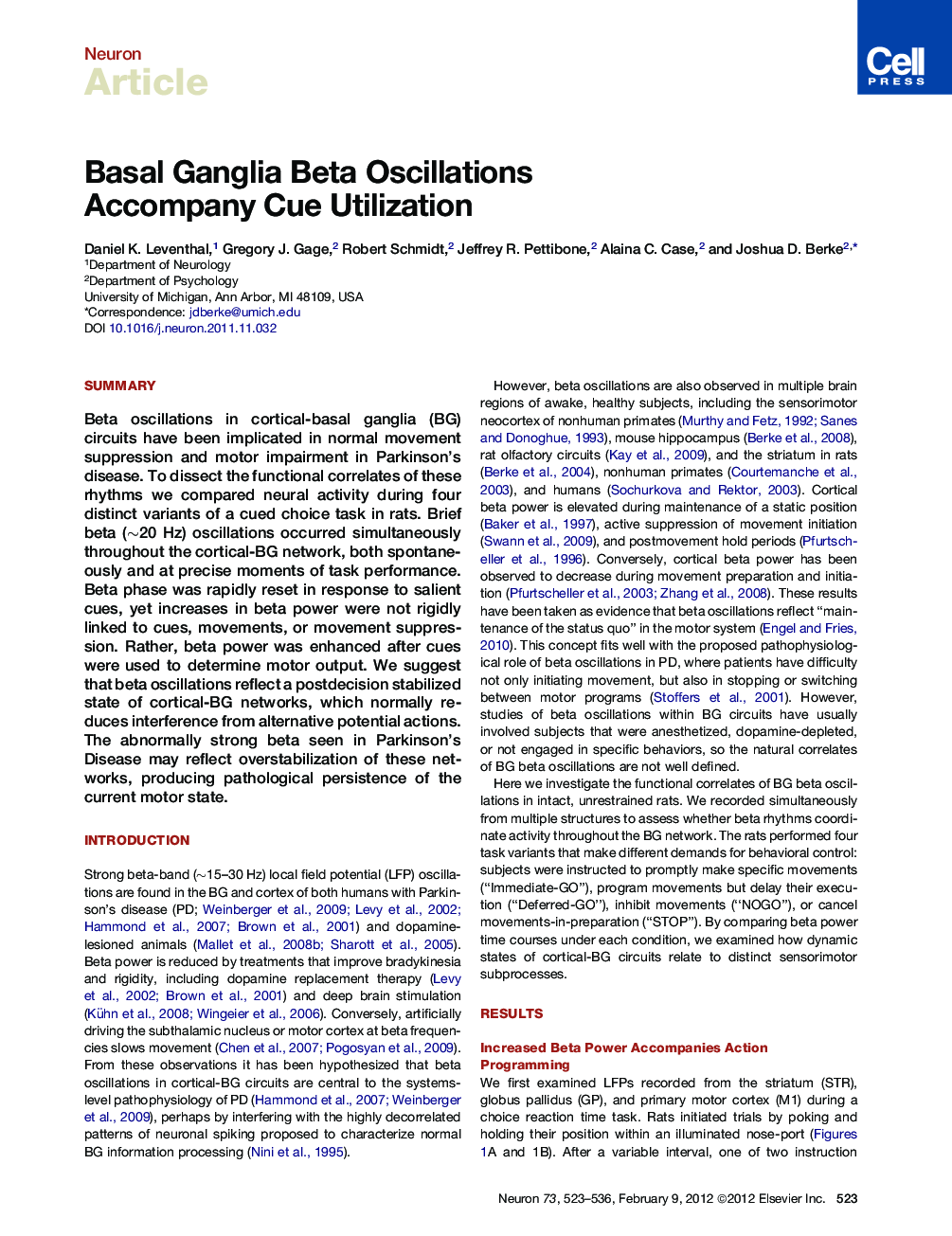| Article ID | Journal | Published Year | Pages | File Type |
|---|---|---|---|---|
| 4321494 | Neuron | 2012 | 14 Pages |
SummaryBeta oscillations in cortical-basal ganglia (BG) circuits have been implicated in normal movement suppression and motor impairment in Parkinson's disease. To dissect the functional correlates of these rhythms we compared neural activity during four distinct variants of a cued choice task in rats. Brief beta (∼20 Hz) oscillations occurred simultaneously throughout the cortical-BG network, both spontaneously and at precise moments of task performance. Beta phase was rapidly reset in response to salient cues, yet increases in beta power were not rigidly linked to cues, movements, or movement suppression. Rather, beta power was enhanced after cues were used to determine motor output. We suggest that beta oscillations reflect a postdecision stabilized state of cortical-BG networks, which normally reduces interference from alternative potential actions. The abnormally strong beta seen in Parkinson's Disease may reflect overstabilization of these networks, producing pathological persistence of the current motor state.
► Transient beta rhythms naturally synchronize activity throughout the basal ganglia ► Beta oscillations are not rigidly coupled to sensory processing or motor output ► Rather, beta occurs once cues are used to determine a motor plan ► The elevated beta state may stabilize this plan against competing alternatives
